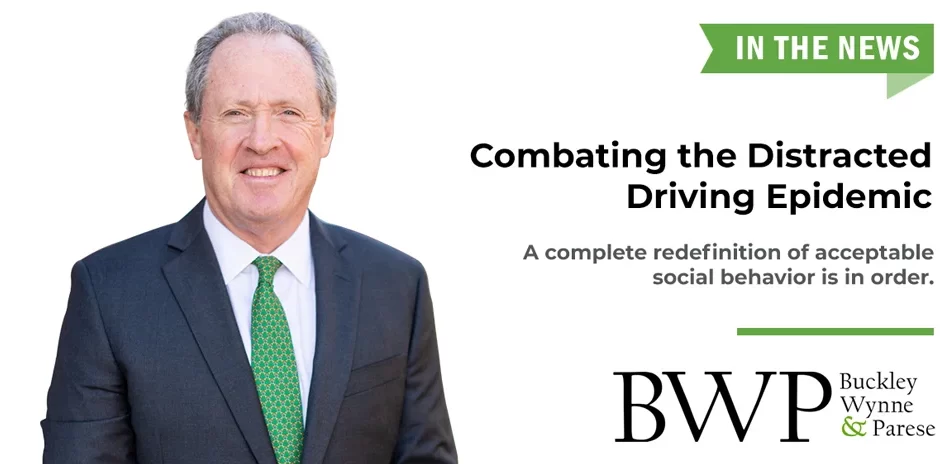Combating the Distracted Driving Epidemic: Solutions in Technology and Education
Distracted driving has reached epidemic proportions in Connecticut. In the U.S. it has become one of the leading causes of car wrecks. Using new technology, there are ways to begin to reduce the senseless death and injury caused by distracted driving. A complete redefinition of acceptable social behavior is in order. What America did to make seatbelt use the norm, now must be done to reduce distracted driving.
Joel Feldman, founder of the End Distracted Driving campaign, hosts presentations across the country about the dangers of distracted driving. His 21-year-old daughter, Casey, was tragically killed by a distracted driver while in a crosswalk. Since then, he has committed his life to educating and advocating to reduce distracted driving and spread awareness of its dangers. On behalf of End Distracted Driving, I have offered presentations at local high schools – students seem to recognize and appreciate the issue and the need for immediate change. The remainder of our driving population must do the same.
In 2021, there were over 5,400 crashes as a result of distracted driving. In a study done by AAA Foundation for Traffic Safety, 84% of drivers recognized that cell phone distractions while driving are unacceptable, but 36 percent of those same drivers admitted to using their phone while driving during the previous month. Unfortunately, texting and driving has become normalized.
Seat belt use became accepted through education, manufacturer compliance and law enforcement. The same can be done for distracted driving.
There is available technology to help eliminate cell phone use in moving vehicles. There are apps that can be downloaded on smartphones that prohibit texts and calls while a vehicle is in motion, which further prevent any temptation for drivers to check their phone while driving.
CellControl DriveID is a device that attaches to the windshield to prevent the driver from sending or receiving text messages. It can also block emails and smartphone cameras. AT&T DriveMode is activated when the driver’s car reaches 15 miles per hour, blocking text alerts. Apple’s Do Not Disturb While Driving mode blocks incoming calls and text messages when the user’s iPhone senses the vehicle is moving or connected to a car through Bluetooth. There are many more. LifeSaver, is designed for families and fleets. It automatically senses when you’re driving, blocking text notifications and disabling other phone features while the car is in motion, such as using email or accessing the camera.
It is probably just a matter of time before car insurance companies offer reduced rates for those with such devices installed – just like they did years ago with the introduction of seatbelts. There is, of course, no reason to wait.
Every driver must attempt to complete calls or texts before starting the car. Preparation is critical. Parents should remember not to call children if you know they are driving. Perhaps not surprising, teen drivers receive the most calls from their parents, more than general calling patterns would suggest. Finally, for parents, it is critical to be a good role model. Your child looks to you as a driver, so practice safe driving yourself.
Attorney John F. Buckley Jr. is a partner at the New Haven-based firm of Buckley Wynne & Parese. He can be reached at 203-776-2278 or [email protected].
This article was featured in the following news publications:

Serving All of Connecticut
Free Evaluation 24/7
We understand the stress of dealing with an injury. Our team is here to provide compassionate support and effective legal representation, statewide.

